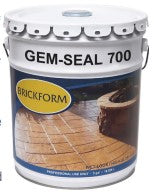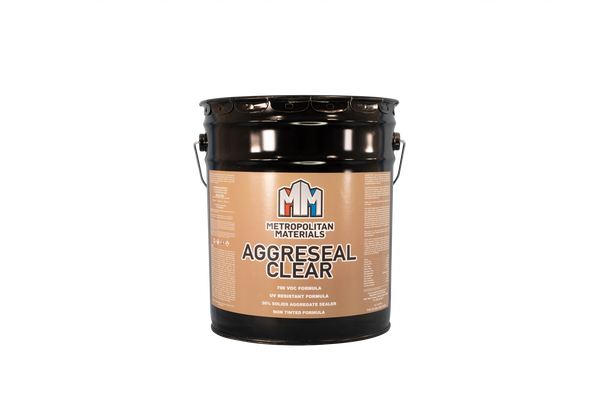
Start Shopping
Browse our selection of concrete products available.

Decorative concrete designs incorporating exposed aggregate add aesthetic charm to sidewalks, driveways, patios, lawn edgings, and more. However, no exposed aggregate project is complete without applying a sealer.
A high-quality sealer will accentuate the richness and depth of the pad’s color while also helping protect it from abrasion, freeze damage, dusting, efflorescence, spalling, staining, and more. An outdoor exposed aggregate surface typically needs to be resealed every 3 to 5 years, depending on the wear and tear it endures.
Choosing the right type of sealer for your project is also important, as the wrong sealer can strongly reduce the quality of an otherwise flawless product.
In this blog post, we’ll explore the differences between the various types of exposed aggregate sealers you can use, recommend some of our favorite products, and provide professional application and maintenance advice.
Open aggregate sealers are available in two primary types: water-based and solvent-based While they have some similarities, solvent-based sealers are typically recommended for exposed aggregate projects.
Here's an overview of each type’s characteristics:
Exposed aggregate sealer products can either be transparent or colored. Both types provide similar levels of protection to the aggregated surface; however, the clear type doesn’t change the natural appearance of the concrete and won’t create a sheen. Comparatively, colored aggregate sealers add a hue to the exposed aggregate and produce a semi-glossy, wet-looking sheen, even when fully dry.
When choosing a sealer for your exposed aggregate project, you’ll also need to understand and consider:
Some of our favorite sealers for exposed concrete aggregate include:

Brickform Gem-Seal is a high-quality, acrylic solvent-based aggregate sealer formulated to protect decorative concrete surfaces, including colored, stained, stamped, and exposed aggregate concrete. It produces a transparent, non-yellowing, high-gloss finish.
Gem-Seal should be applied, without thinning, when temperatures are between 50 and 85 degrees Fahrenheit and should be allowed to dry at least 24 hours before receiving foot traffic. 72 hours is better, especially for high-traffic areas. Don’t apply Gem-Seal on foggy, rainy, extra-hot, cold, or windy days.

Aggreseal Supreme is a UV-resistant, high-gloss, solvent-based exposed aggregate sealer available in clear, gray, and brown finishes. These acrylic-based, penetrating sealers enhance the concrete’s resistance to intense heat and cold, rain, deicing salt, and stains and produce a wet-looking appearance when fully dried. These sealers also provide excellent adhesion, which will help solidify loose aggregate, enhancing the final product’s safety and durability.
Aggreseal Supreme should only be applied when temperatures are between 50 and 80 degrees Fahrenheit. After applying, allow the surface to dry for at least six hours before using it. If the exposed aggregate surface is a driveway, allow it to dry for at least 48 hours. Lastly, if applying multiple coats, allow it to dry for at least four hours before applying a second coat.
It’s important to be realistic when it comes to DIY projects. It’s easy to watch professionals working and develop a false sense of what you can accomplish on your own. And, in the case of concrete work specifically, small mistakes can stand out like sore thumbs. Plus, once the concrete is cured and sealed, it can be challenging to modify.
If you’re going to apply an exposed aggregate concrete sealer, be sure you:
It’s important to reapply sealer every 3 to 5 years. You can extend the time between reapplications by:
Metropolitan Materials LLC is committed to providing our customers with superior-quality decorative concrete materials, tools, and supplies. Visit our online store to view our exposed aggregate sealers, or contact our pros today if you need help selecting the best sealer.

Browse our selection of concrete products available.

We're just a message away from ensuring you find the perfect solution for your project.

Create an account now to unlock amazing benefits like faster reordering, new product announcements, sales details and more!
{"one"=>"Select 2 or 3 items to compare", "other"=>"{{ count }} of 3 items selected"}